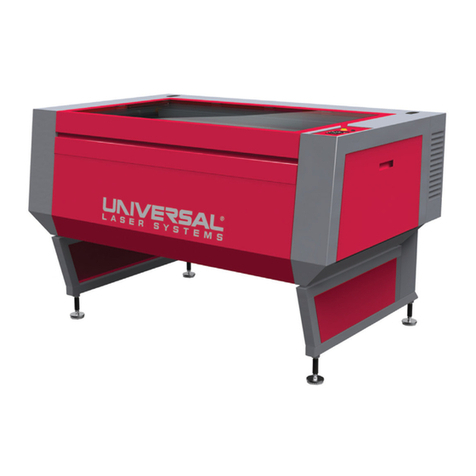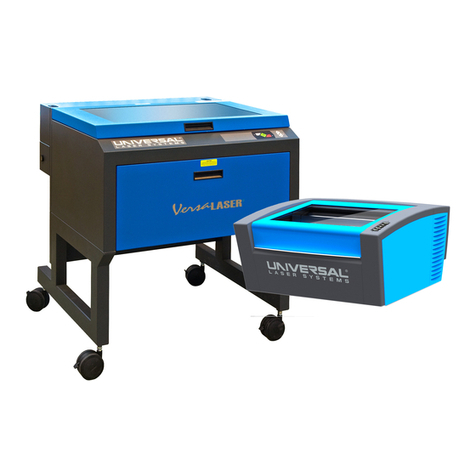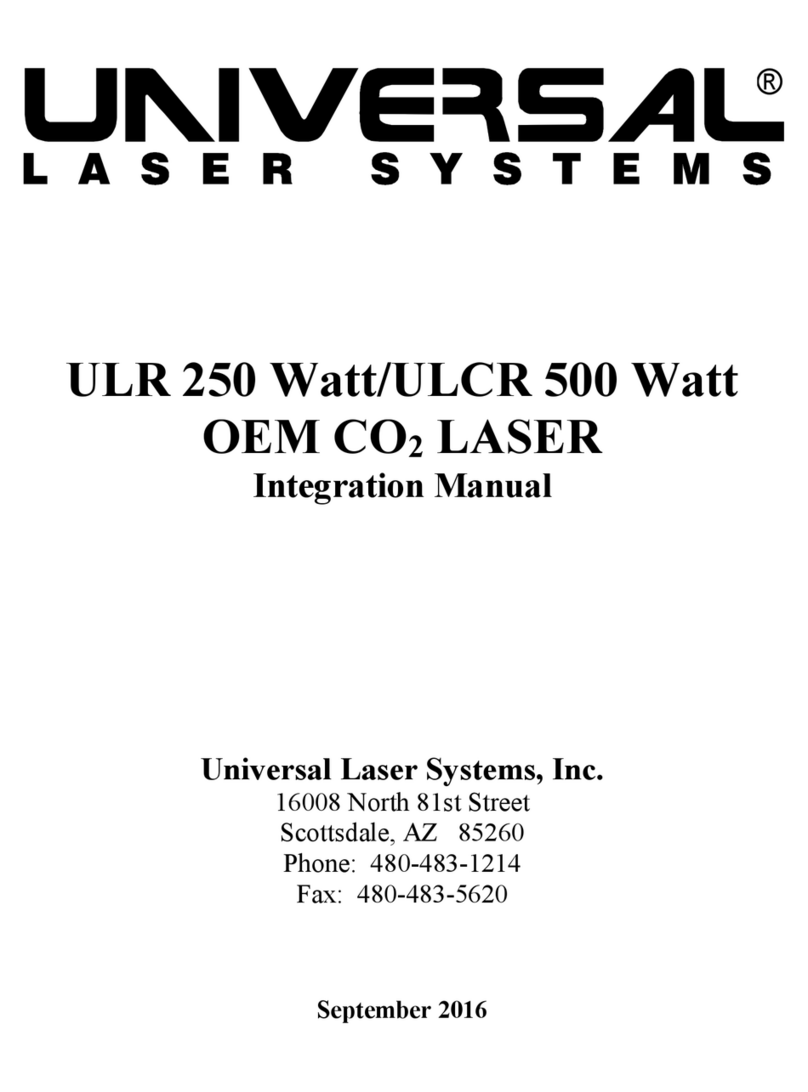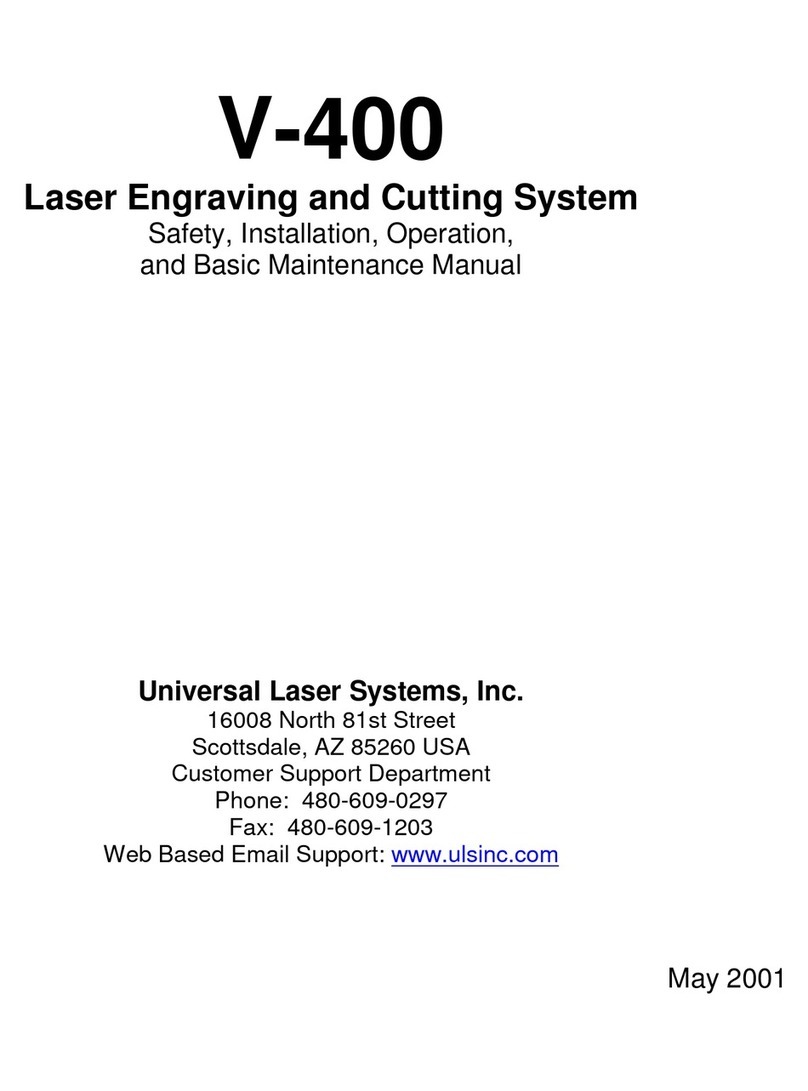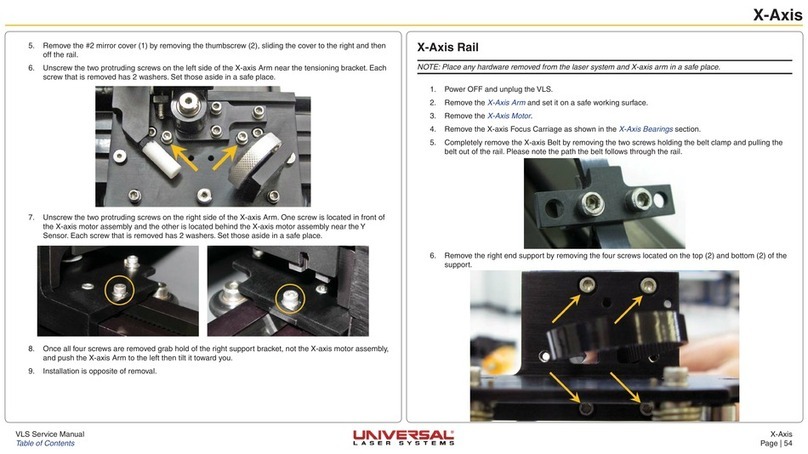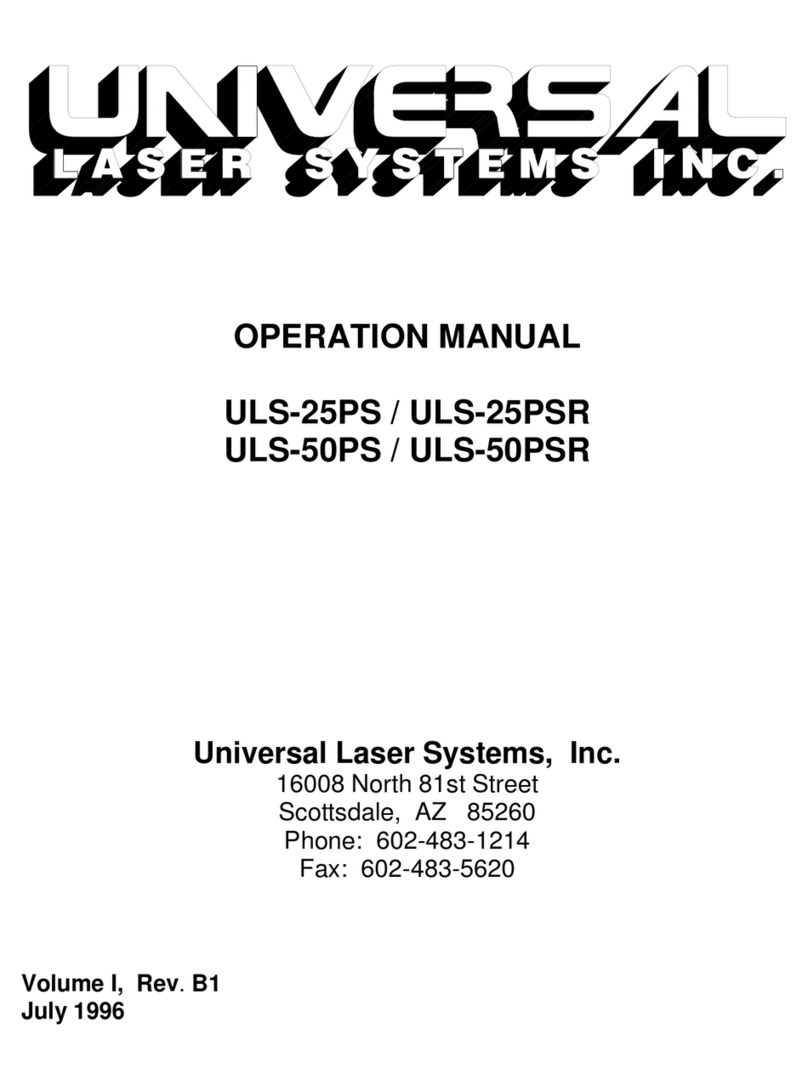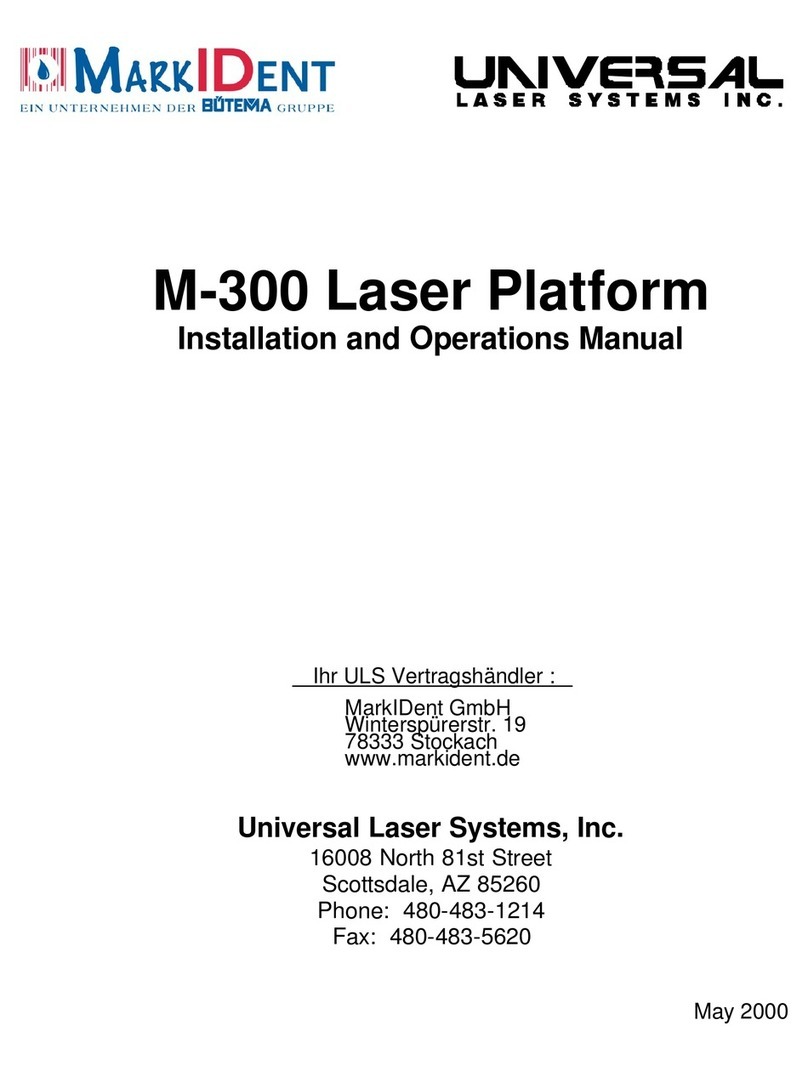
7
Maximum Effective Raster
Material Processing Speed
Equivalent to more than 300 in. /sec (equivalent to more than 7620
mm/sec) −Requires the SuperSpeed module.
Maximum Functional Vector
75 in./sec (1905 mm/sec)
Precision Material-
Repeatability of ± .0025 in. (63.5 micron) using motorized focus assembly
and high-resolution touch sensor.
Integrated Touch Screen
A fully integrated 21 in. (533 mm) touch panel command and control
console used to control laser system operation.
Controllable Laser Power
Density*3
The unique ability to control laser power densities while maintaining a
high degree of alignment accuracy of the focal plane with the material
surface as well as a Gaussian beam distribution. Power Densities: 1X*, 4X
(included) or 13X* for 10.6 µm and 9.3 µm wavelengths; 52X for 1.06 µm
wavelength (included with fiber laser configuration).
Dynamic Energy Delivery
Maintains even laser energy delivery regardless of the speed of the
motion system.
Design File Geometry
Preservation
Curves in a design file, i.e., circles, ellipses, b-splines, Beziers, and NURBS,
kept throughout the path planning process rather than linearly
True Position Laser Pulsing
Optimal laser pulse placement driven by positional feedback from
synchronized multi-axis linear encoders.
Intelligent Path Planner
Comprehensive path planning algorithm that minimizes laser processing
completion time.
Multifunction Material
Support Structure
A built-in aluminum honeycomb work surface designed to keep materials
stationary and in focus during laser processing. Reduces back reflection
and enables exhaust of laser processing byproducts from underneath
materials. Available in two versions: manually adjustable, with vertical
range < 3 in. (76.2 mm) and motorized adjustable, with vertical range
< 12 in. (304.8 mm). Includes a full-field masking material dispenser.
Machined Aluminum Tiles*
Provides a rigid and smooth work surface for laser material processing.
Also compatible with Material Support Pins (Not recommended for laser
cutting unless configured with Material Support Pins).
Material Support Pins*
Custom machined pins for laser cutting that can be inserted into either
the Multifunction Material Support Structure or the Machined Aluminum
Tiles. Pins add sufficient space between the target material and the work
surface to eliminate back reflection.
Rotary Axis Module*
Enables 360° rotation laser processing of cylinders, spherical-shaped, and
tapered objects. Addressable resolution of 13 arc seconds.
Class 4 Pass-Through*
Patented technology that enables the laser system to facilitate material
pass-through in compliance with CDRH and international safety
regulations for operating Class 4 laser systems. This optional device
converts a fully enclosed Class 1 system into an open Class 4 system.
